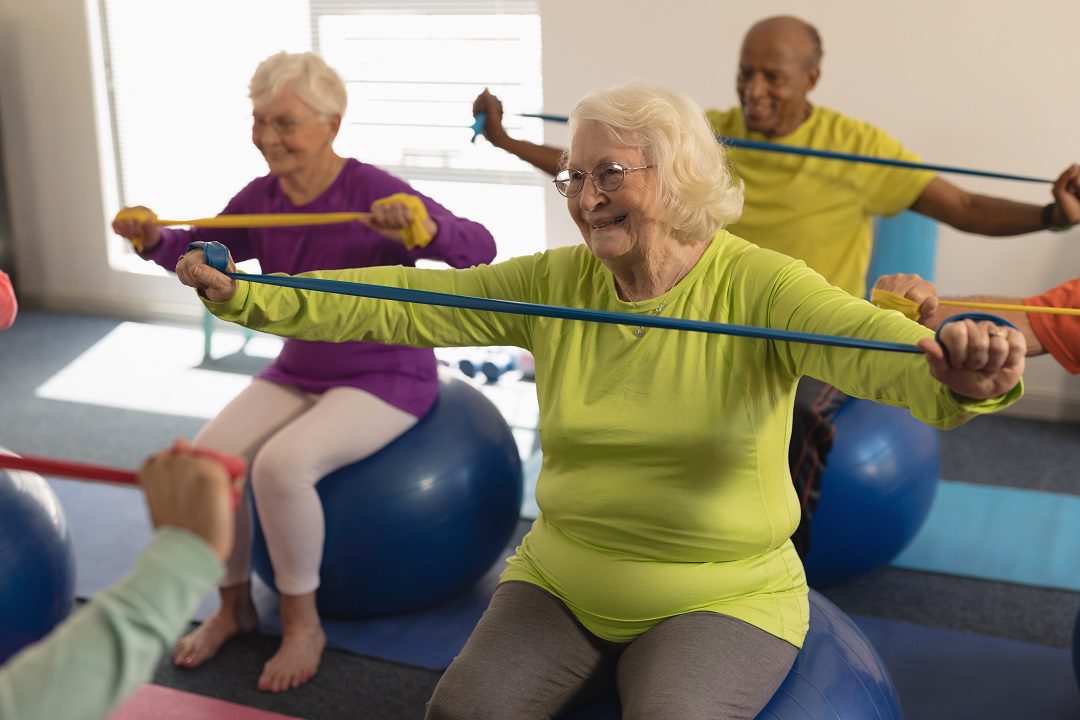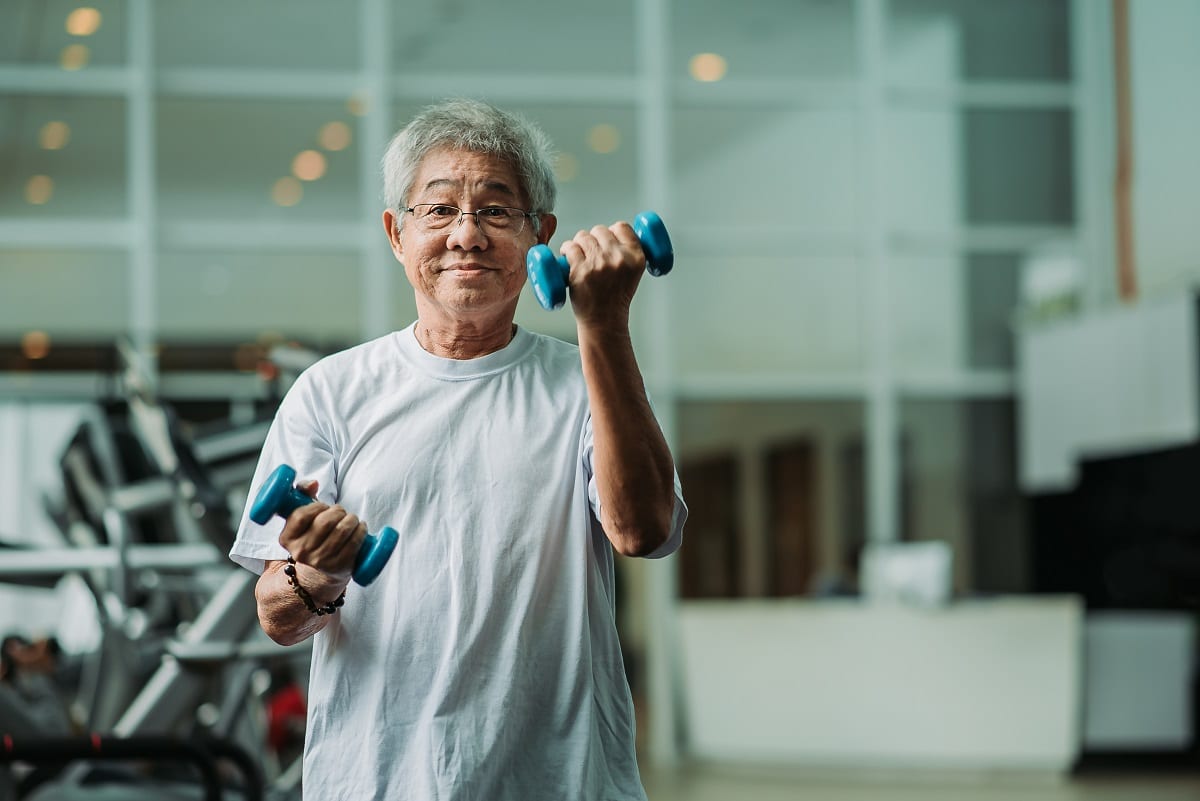Aerobic exercise
When people think about exercise, they often think of aerobic exercise. These are exercises which raise your heart rate and get you panting. Jogging, swimming, cycling and brisk walking are all examples of aerobic or cardio exercises.
Aerobic exercise has been shown to improve or maintain memory and thinking, and in some studies the daily function of people with dementia. Aerobic exercise also has other benefits on mood, sleep and physical health. There is also evidence that anaerobic exercises (strength training), such as weights or pulleys, may be good or even better for the brain, as described below. You can also cross-train, incorporating both types of exercise.
Strength training
Strength training or resistance training are exercises which increase your muscle strength. Strength-based exercises include lifting weights, using exercise bands, or lifting your own bodyweight. Some studies suggest that doing aerobic exercises and strength training produces better results than aerobic exercise alone.
If you haven’t done strength training before, you might want to see a physiotherapist, exercise physiologist or personal trainer. They will assess your abilities and develop a program suitable for you. You may have to pay privately for these services, and the best way to find someone suitable is to ask for a recommendation from your doctor, other health professional or friends. Seniors exercise classes may also include some strength training.
Flexibility
Maintaining flexibility as we age is important. An exercise program needs to include moving joints and stretching muscles to help us move easily and avoid injury. Exercises such as yoga, tai chi, dancing or bowls can help maintain flexibility.
Balance
We don’t tend to think much about balance exercises, but the ability to balance or recover when we are thrown ‘off balance’ reduces with age. Poorer balance means we are at a greater risk of falls and injury.
Balance exercises involve safely challenging your ability to balance with sideways walking, heel raises and (safely) practicing finding your ‘toppling point’ – the point just before you lose your balance and increase the time you can hold this pose. Balance and strength go hand in hand. You need to work on them both. The good news is research has shown that even very old and frail people will improve quickly with regular practice.
Falls prevention
‘An ounce of prevention is worth a pound of cure’.
For falls, the best treatment is prevention and exercise is the best prevention. People with dementia fall more often than people of the same age without dementia, so exercising together with the person you support can be fun and reduce their (and your) risk of falls.
Falls prevention programs usually incorporate strength, balance and flexibility exercises. Often falls prevention programs will also suggest changes you can make around your home to reduce your risk of falls. These websites can help you find a local falls prevention or exercise program:
- New South Wales: Active and Healthy
- Queensland: Stay on your feet
- Victoria: Victorian falls directory
- Australian Capital Territory: Falls and Falls Injury Prevention Program
- South Australia: Falls South Australia
- Tasmania: Stay on your feet
- Western Australia: Stay on your feet
- Northern Territory: Darwin and Palmerston falls prevention
Start slow and build up gradually
Australian physical activity guidelines suggest that older adults should do at least 30 minutes of moderate intensity physical activity on most, preferably all, days. Moderate intensity physical activity means you’re exercising hard enough to raise your heart rate and break a sweat. If you currently don’t do much exercise then start slowly. You might start by doing a 15 minute walk a few times a week. Then build up to walking for longer and more often.
The Australian physical activity guidelines also recommend different types of activity each week. Do exercise that you enjoy, you’re much more likely to continue with the exercise if you enjoy it. Many people prefer to exercise with others. You might join a seniors movement class, play golf (more benefits if you walk rather than driving in a golf buggy), or have a regular walking date with a friend.
- If you have health conditions, talk to your doctor before starting to exercise for advice about what’s safe for you to do. If you feel faint, dizzy or pain, stop and talk to your doctor.
- Make exercise part of your weekly routine.
Exercise as part of everyday activities
Some people prefer to incorporate exercise into their everyday activities. You might walk up the stairs rather than take a lift, or walk rather than drive to the shops, or do the vacuuming or gardening. Visit the Health Department for more tips and ideas for being active.

Exercise every day
- Do at least 30 minutes of moderate intensity physical activity on most, preferably all, days.
- Exercise hard enough to raise your heart rate and break a sweat.
- If you find 30 minutes difficult right now, start with just 10 minutes once or twice a day. After 2 weeks, increase to 15 minutes twice a day.
- Over the course of the week, try to incorporate different types of activities.
- If you prefer not to exercise on your own, join an exercise group or find an exercise buddy.
Watch this inspirational video
Dementia Australia have shared these videos about people with dementia maintaining their physical and mental health on the Living Well with Dementia website:





